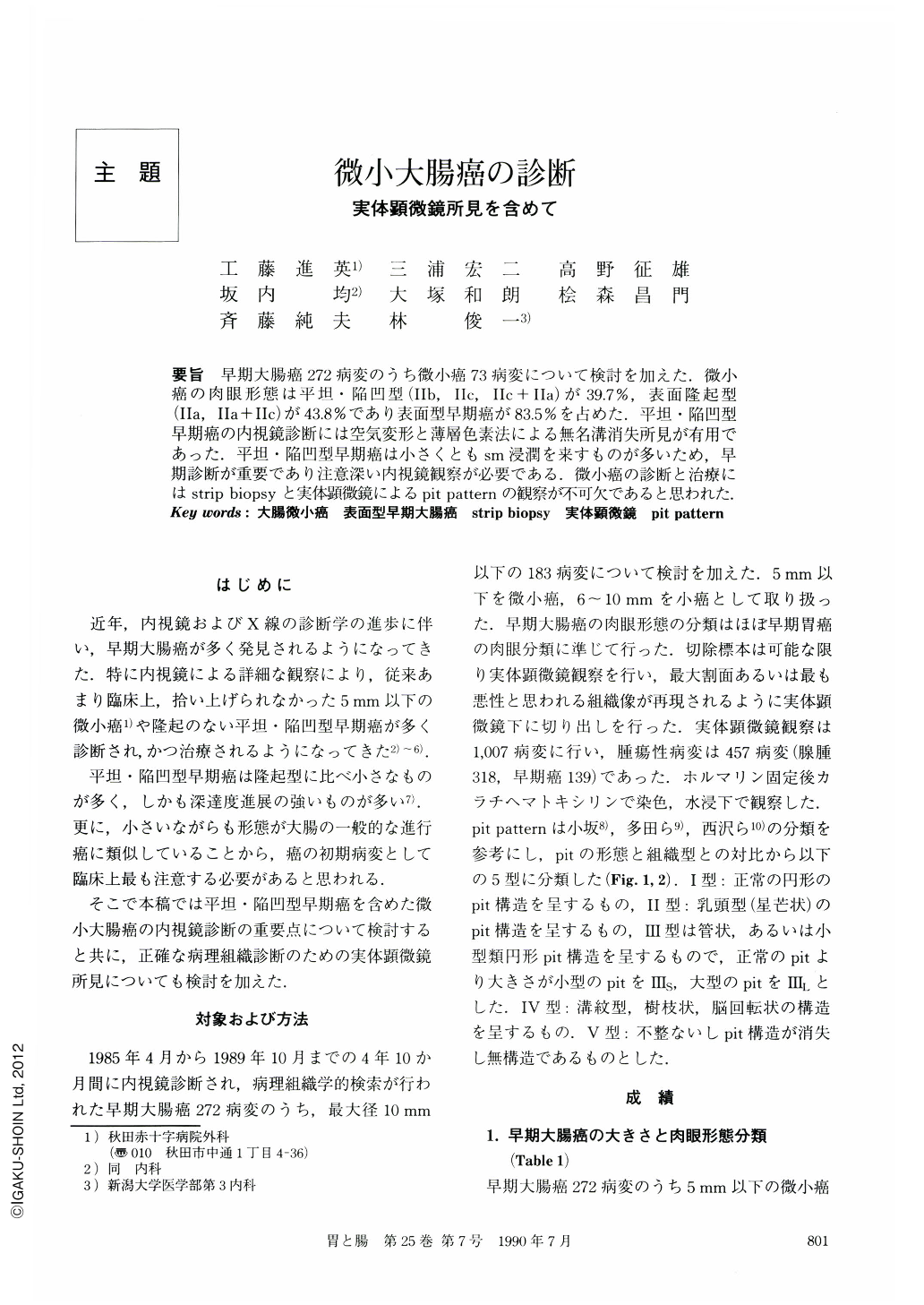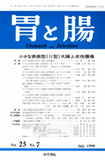Japanese
English
- 有料閲覧
- Abstract 文献概要
- 1ページ目 Look Inside
- サイト内被引用 Cited by
要旨 早期大腸癌272病変のうち微小癌73病変について検討を加えた.微小癌の肉眼形態は平坦・陥凹型(Ⅱb,Ⅱc,Ⅱc+Ⅱa)が39.7%,表面隆起型(Ⅱa,Ⅱa+Ⅱc)が43.8%であり表面型早期癌が83.5%を占めた.平坦・陥凹型早期癌の内視鏡診断には空気変形と薄層色素法による無名溝消失所見が有用であった.平坦・陥凹型早期癌は小さくともsm浸潤を来すものが多いため,早期診断が重要であり注意深い内視鏡観察が必要である.微小癌の診断と治療にはstrip biopsyと実体顕微鏡によるpit patternの観察が不可欠であると思われた.
From April, 1985 to October, 1989 (4 years and 10 months), we gave endoscopic diagnoses to 272 lesions of early colo-rectal cancer, and performed histological examinations on them. We studied about 174 of them that were under 10 mm in maximum diameter.
Among the 273 early colo-rectal cancer lesions, 73 lesions (26.8%) were minute cancers under 5 mm in diameter. 110 lesions (40.4%) were small cancers 6 to 10 mm in diameter. Gross forms of minute cancers were:1) 10 lesions of flat type (Ⅱb), 2) 19 lesions of superficial depressed type (Ⅱc, Ⅱc+Ⅱa), 3) 26 lesions of flat elevated type (Ⅱa, Ⅱa+Ⅱc), and 4) 18 lesions of elevated type (Is, Ips, Ip). Among the minute cancers, flat and depressed type (39.7%) and flat elevated type (43.8%) held dominant positions.
Among small cancers, 1 lesion was of Ⅱb type, 12 lesions were of depressed type, 27 lesions were of flat elevated type, and 70 lesions were of elevated type. There were more elevated type lesions than flat type lesions.
Irregular margins and pale redness or fading were characteristic fiberscopic findings concerning flat and depressed type early cancers. Also, the shape of the lesion changed according to the change of air quantity inside the colon.
Furthermore, it was noticed that innominate grooves disappeared after being sprinkled with very small quantity of pale coloring. Flat and depressed minute cancers were divided into 4 types (types A to D) according to fiberscopic and pathological findings: 1) type A-15 lesions with redness and irregularity, 2) type B-4 lesions with minute depression, 3) type C-5 lesions with fading and irregularity, and 4) type D-5 round shaped lesions with redness. Type A lesions with redness and irregularity were most often seen. Type C lesions with fading and irregularity were difficult to distinguish from hyperplastic lesions. Therefore, it seemed important to study their transformation according to the change of air quantity, and their irregular margins. Depression in Ⅱc type was shallow except for that of type B.

Copyright © 1990, Igaku-Shoin Ltd. All rights reserved.


